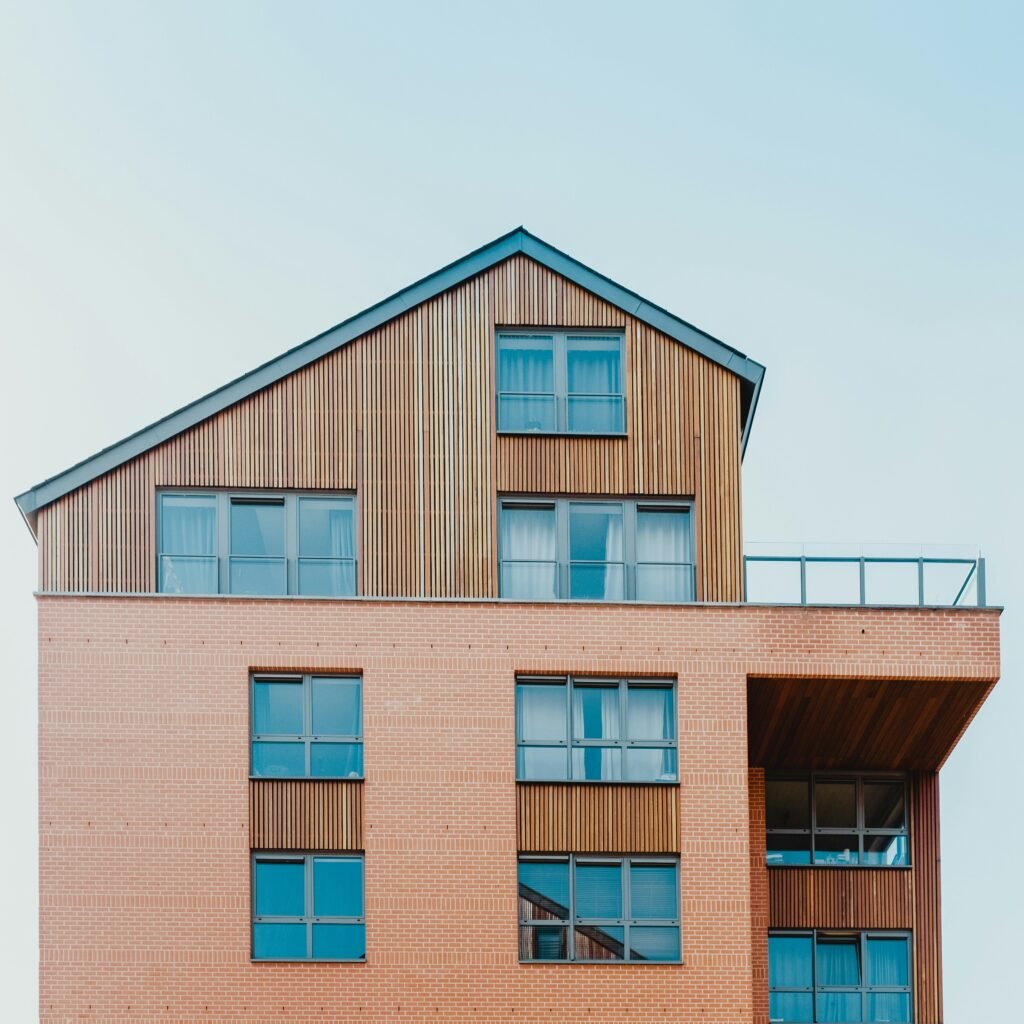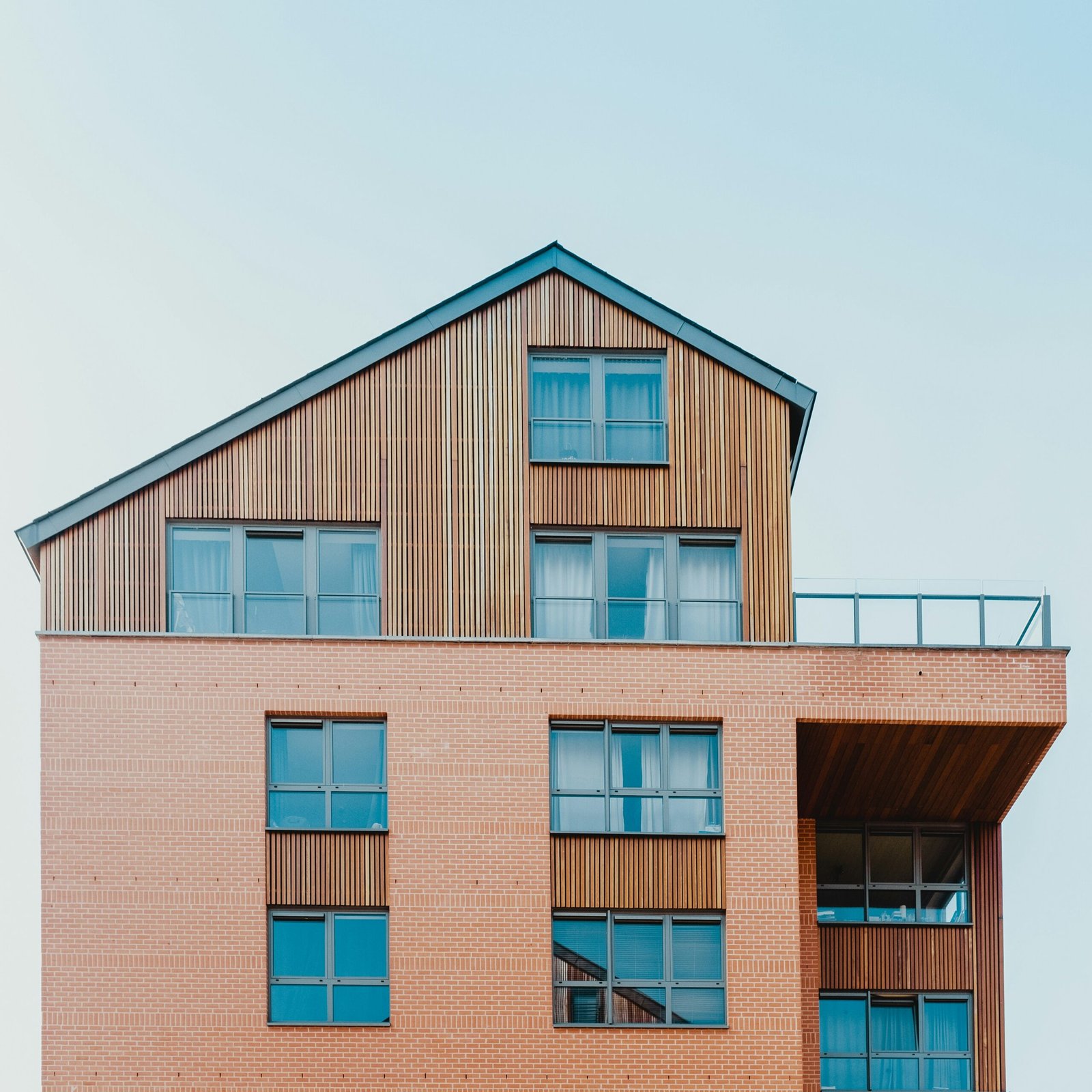You may not realize it, but the amenities that surround your home can have a significant impact on its value. From parks and schools to shopping centers and restaurants, these nearby amenities not only enhance your quality of life but also attract potential buyers when it comes time to sell. In this article, we will explore the various ways in which these amenities affect property values, and how you can take advantage of them to maximize the worth of your home. Whether you’re looking to buy a new property or thinking of making improvements to your current one, understanding the relationship between nearby amenities and property values is key to making informed decisions. So, let’s dive in and discover the hidden influence of the environment around your home.

Understanding Property Value
Definition of Property Value
Property value refers to the monetary worth of a property, which is determined by various factors such as location, condition, size, and amenities. It is the price at which a property can be bought or sold in the real estate market. Property value is often influenced by external factors, including nearby amenities, which play a significant role in the valuation process.
Factors Influencing Property Value
Several factors can influence the value of a property, making it a complex and multifaceted concept. Apart from location and amenities, factors such as housing supply and demand, economic conditions, interest rates, and government regulations can also impact property values. Understanding these factors is crucial for property owners, buyers, and sellers to make informed decisions.
Relationship between Property Value and Location
The location of a property is one of the most significant determinants of its value. Whether it is a residential or commercial property, the proximity to essential amenities can significantly influence its attractiveness and desirability. Easy access to schools, healthcare facilities, public transportation, retail and leisure centers, and low crime rates are some key aspects of location that can affect property values. The closer the property is to these amenities, the higher its value is likely to be.
Importance of Nearby Amenities
Definition and Examples of Amenities
Amenities are features or facilities that enhance the quality of life in a particular area. They can include anything that makes living or working in a location more convenient, comfortable, and enjoyable. Examples of amenities can range from educational institutions, healthcare facilities, and transportation options to retail centers, parks, entertainment hubs, and even environmental factors such as parks, green spaces, and water bodies.
Role of Amenities in Enhancing Life Quality
Amenities play a crucial role in enhancing life quality for individuals and families. Easy access to quality education, healthcare, transportation, and recreational facilities can significantly improve the well-being of residents. Living in close proximity to these amenities allows people to save time, effort, and money, thereby contributing to a higher quality of life. The availability of amenities also attracts more potential buyers, increasing demand and, subsequently, property values.
Amenities as Value Additions to Properties
When it comes to real estate, amenities act as value additions to properties. They can differentiate one property from another and influence buyer decisions. Properties that are well-equipped with nearby amenities tend to command higher prices and are more likely to experience appreciation over time. Potential buyers often assess the convenience and accessibility of amenities when considering a property, and having them in close proximity adds significant value to the overall package.

Impact of Schools on Property Values
Influence of School Proximity
The proximity of schools to a property has a considerable impact on its value, especially for families with children. The convenience of having schools within walking distance or a short commute can be a deciding factor for buyers. Proximity to schools reduces travel time and allows children to access quality education more conveniently. As a result, properties located near reputable schools often demand higher prices, making them attractive investments for homeowners and investors alike.
The Role of School Quality in Defining Property Value
Aside from proximity, the quality of schools in the area also plays a vital role in defining property value. Areas renowned for their high-performing schools often attract families who prioritize their children’s education. As a result, properties located near top-tier schools tend to experience greater demand and higher prices compared to those in areas with lower-performing schools. The perception of receiving a quality education can significantly impact property values.
Case Studies: Impact of Nearby Schools on House Prices
Several case studies have analyzed the impact of nearby schools on property values. In a study conducted in the UK, it was found that homes located within the catchment area of outstanding schools experienced an average price increase of around 8%. Similarly, a study conducted in the United States found that houses located within a mile of highly ranked schools had an average value that was $205,000 higher than houses located further away. These examples highlight the positive correlation between school proximity and property values.
Impact of Healthcare Facilities on Property Values
Importance of Accessibility to Healthcare Facilities
The accessibility of healthcare facilities is a vital consideration for homeowners and potential buyers. Having quality healthcare services nearby provides a sense of security and convenience. It ensures that medical assistance is readily available in case of emergencies or ongoing healthcare needs. Properties located in close proximity to hospitals, clinics, and other healthcare facilities tend to attract higher prices and receive greater interest from buyers.
Analysis: Properties Near Hospitals Vs. Residential Areas
A closer analysis of property values near hospitals reveals interesting trends. In many cases, properties located near hospitals have experienced higher appreciation in value compared to those in residential areas without such facilities. The close proximity to medical care makes these properties more appealing to individuals, especially those who prioritize healthcare accessibility. Consequently, houses near hospitals often command premium prices, reflecting the added convenience and peace of mind they offer.
Correlation between Property Value and Healthcare Facilities
A strong correlation between property value and the presence of nearby healthcare facilities has been observed in various studies. Research conducted in the United States found that properties within 5 miles of highly ranked hospitals had an average value of $18,000 more than those further away. Additionally, properties situated near established medical centers are likely to experience a more stable market value, as healthcare services are considered essential and relatively immune to economic fluctuations.

Influence of Public Transportation on Property Values
The Appeal of Easy Commuting
Easy access to public transportation is highly desirable for many individuals, especially those who commute to work or frequently travel. The convenience of having bus stops, train stations, or other transit options nearby can significantly impact a property’s value. Properties located near public transport hubs offer residents the advantage of reduced commuting time, decreased reliance on private vehicles, and enhanced mobility. As a result, they often attract higher prices and demand.
Understanding the Premium of Public Transport Proximity
The proximity to public transport options often commands a premium price in the real estate market. Studies have shown that properties located within walking distance of public transport stations can attract 10-20% higher prices than similar properties further away. This premium is primarily driven by the convenience and cost-saving benefits associated with easy access to public transportation. Buyers value the time and money saved by not having to rely heavily on private vehicles for commuting purposes.
Examples: House Prices Near Public Transport Stations
Numerous examples around the world highlight the impact of public transport on property values. In London, for instance, properties located near underground or train stations command higher prices than those located further away. Similarly, in cities like Tokyo and New York, homes located within easy walking distance of subway stations are highly sought after and attract significant interest from buyers. The accessibility and convenience provided by public transportation contribute to the desirability and, consequently, the value of these properties.
Impact of Proximity to Retail and Leisure Facilities on Property Values
Role of Retail Centers in Property Appreciation
The presence of retail centers and shopping districts near residential areas can significantly enhance property values. Easy access to a variety of shops, supermarkets, restaurants, and other amenities within close proximity adds convenience and quality to daily life. Homebuyers often prioritize having retail options nearby, as it saves time, offers a wider range of choices, and enhances the overall lifestyle experience. Properties located near retail centers tend to enjoy higher demand and increased value.
Effect of Leisure Facilities, Parks, and Recreational Areas on House Price
Leisure facilities, parks, and recreational areas are significant contributors to the desirability and value of properties. The availability of green spaces and places for recreational activities enhances the quality of life for residents. Proximity to parks allows individuals and families to enjoy outdoor activities, exercise, and spend leisure time in a natural and healthy environment. Properties situated near leisure facilities and green spaces often experience high demand and increased property values.
Case Studies: Effect of Shopping Malls and Entertainment Hubs on Property Values
Numerous case studies provide evidence of the positive impact of shopping malls and entertainment hubs on property values. In a study conducted in Australia, it was found that houses located within a 10-minute walk of a shopping center experienced an average price premium of 5-8%. Similarly, the presence of entertainment hubs, such as theaters or cultural venues, near residential areas has been observed to increase property values. These case studies emphasize the influence of retail and leisure facilities on property appreciation.
Influence of Crime Rates on Property Values
Perception of Safety and Its Effect on Property Price
The perception of safety is a crucial factor in determining property values. Potential buyers often consider the crime rates of an area when making purchasing decisions. High crime rates create a sense of insecurity and can deter buyers from investing in properties located in such areas. On the other hand, low crime rates contribute to a sense of safety, making properties more attractive and valuable. The perception of safety can significantly influence property prices and market demand.
Neighbourhood Crime Rates and House Prices
Research has consistently shown a negative correlation between crime rates and property prices. Areas with high crime rates often experience a decline in property values, as potential buyers are reluctant to invest in unsafe environments. Conversely, neighborhoods with low crime rates tend to enjoy stable or increasing property values. The correlation between crime rates and property prices highlights the integral role of safety and security in the valuation process.
Examples: Property Value Fluctuations in High-Crime Areas
There are numerous examples of property value fluctuations in high-crime areas. In cities where crime rates are higher, such as certain parts of Chicago or Detroit, properties often suffer from decreased demand and lower prices. The negative perception associated with high-crime areas affects the desirability and value of properties, creating challenges for homeowners and investors. These examples emphasize the importance of considering crime rates when assessing property values.
Effect of Environmental Amenities on Property Values
Implication of Being Near Parks, Green Spaces, and Water Bodies
being near parks, green spaces, and water bodies can have a significant positive impact on property values. The presence of these environmental amenities provides residents with access to natural beauty, tranquility, and recreational opportunities. Living in close proximity to such amenities has been associated with improved mental health, increased physical activity, and overall well-being. Properties located near parks, green spaces, or water bodies often enjoy higher demand and increased value.
Analysis of House Prices in Pollution-Free Areas
Properties located in pollution-free areas often experience higher property values due to the desirable living conditions they offer. Natural surroundings, clean air, and a healthy environment are attributes that many individuals and families seek. Studies have shown that houses situated in areas with low pollution levels or close to green spaces can command higher prices compared to those situated in more polluted or congested areas. The emphasis placed on environmental amenities by buyers contributes to the valuation of properties.
Case Studies: Impact of Environmental Factors on Property Values
Various case studies have demonstrated the impact of environmental factors on property values. For example, a study conducted in the United States found that the presence of a park within 500 feet of a property could increase its value by approximately 8%. Similarly, properties situated near water bodies, such as lakes or rivers, have been observed to command a premium price due to the aesthetic appeal and recreational opportunities they offer. These case studies showcase the influence of environmental amenities on property values.
Potential Negatives of Proximity to Certain Amenities
Disadvantages of Being Near Commercial Areas
While proximity to commercial areas can be advantageous for some, it also presents potential disadvantages for property owners. The noise and congestion associated with commercial areas can impact the peace and tranquility of nearby residential properties. Additionally, the increased foot traffic or vehicular movement can result in parking issues and reduced privacy. These factors may lead to lower property values in some cases, especially for those seeking a quieter and more secluded living environment.
Issues with House Prices Near Industrial Areas
Suppose a property is located near industrial areas or factories. In that case, it may experience challenges in terms of property values due to potential noise, pollution, and decreased aesthetics. The presence of heavy machinery, increased truck traffic, and industrial emissions can impact the desirability of the surrounding area, potentially leading to lower property values. Homebuyers often prioritize living in areas that offer cleaner and greener surroundings, which can negatively affect property values near industrial zones.
Effect of Noise and Traffic Congestion on Property Values
Noise and traffic congestion are two significant factors that can influence property values. Properties located near busy roads, highways, or airports may experience reduced demand and lower prices due to the noise pollution associated with such locations. Similarly, areas with high traffic congestion often face challenges in terms of property values. The inconvenience and stress caused by traffic congestion can deter potential buyers, reducing market demand and affecting property values.
Conclusion: The Integral Role of Amenities in Property Valuation
Summarizing the Impact of Amenities on Property Values
The impact of amenities on property values cannot be understated. Proximity to schools, healthcare facilities, public transportation, retail and leisure centers, low crime rates, and environmental factors all contribute to the desirability, demand, and, subsequently, the value of properties. Amenities enhance the quality of life, convenience, and accessibility for residents, attracting buyers and investors alike. Understanding the influence of these amenities is crucial for both homeowners and those looking to invest in real estate.
Future Trends: Evolving Needs and Preferences
As society evolves and people’s needs and preferences change, the impact of amenities on property values may undergo transformations as well. For example, access to high-speed internet or other technological advancements may become increasingly important factors in property valuation. Additionally, evolving environmental concerns may place greater emphasis on sustainability features or energy-efficient amenities. Staying attuned to these evolving trends will be essential in understanding how amenities shape the future of property values.
Final Thoughts on Location, Amenities, and Property Value
Location, along with the presence of nearby amenities, plays a pivotal role in determining property values. The convenience and quality of life offered by amenities such as schools, healthcare facilities, public transportation, retail centers, and environmental factors are all prime considerations for buyers and investors. Properties situated near these amenities tend to command higher prices, experience increased demand, and enjoy greater appreciation in value. By understanding the impact of amenities on property value, individuals can make informed decisions in the real estate market.
